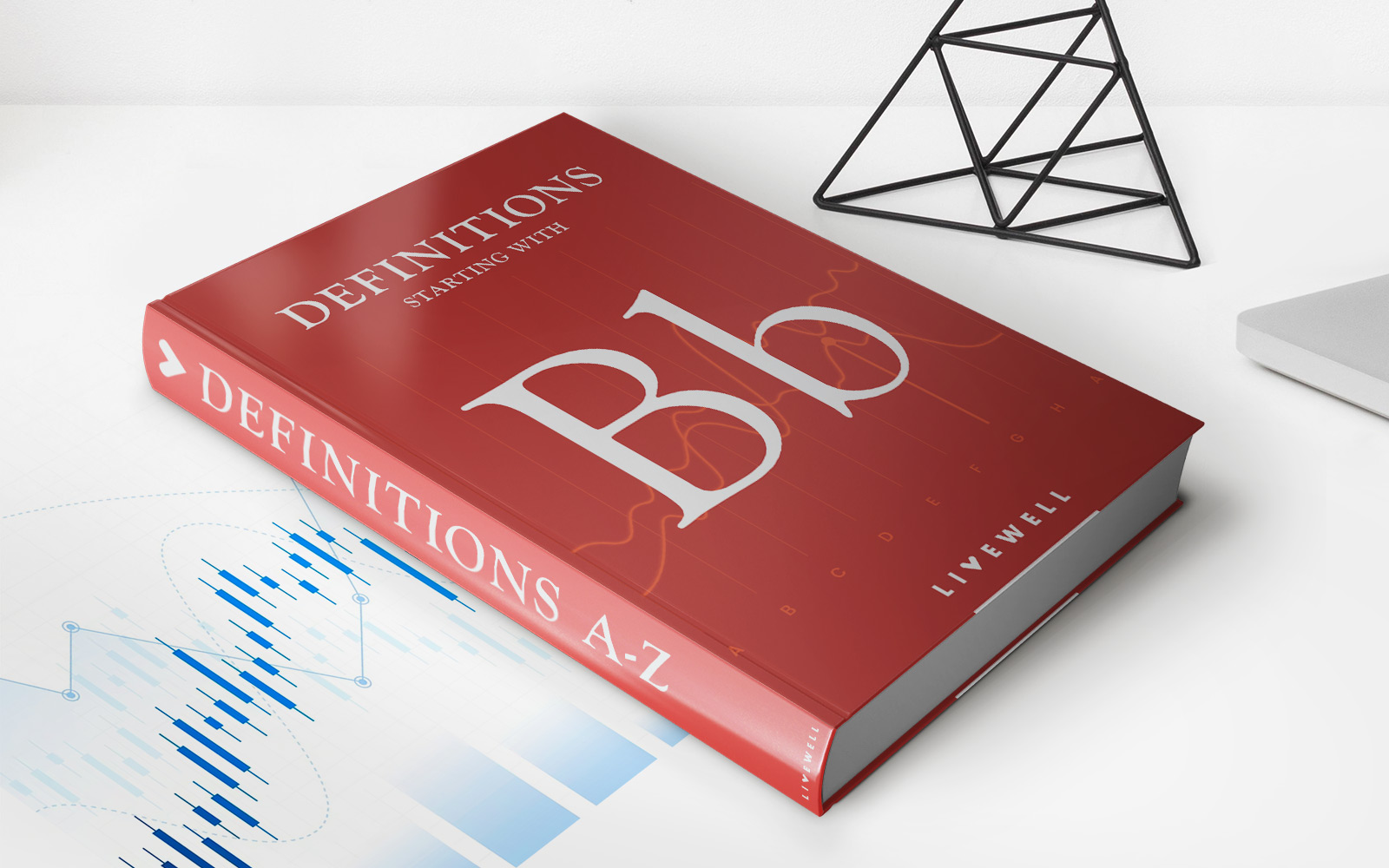

Finance
What Does Incur Mean In Accounting
Published: October 13, 2023
Discover the meaning of "incur" in accounting and its implications for finance. Explore the impact on financial statements and decision-making.
(Many of the links in this article redirect to a specific reviewed product. Your purchase of these products through affiliate links helps to generate commission for LiveWell, at no extra cost. Learn more)
Table of Contents
Introduction
Welcome to the world of accounting, where numbers and financial transactions come to life. In the realm of managing and recording business transactions, it is essential to understand the terminology utilized in the accounting field. One such term is “incur,” which holds significant importance when it comes to tracking and analyzing expenses.
In simple terms, to incur means to become liable or subject to something, in this case, expenses. In accounting, it refers to the point at which an expense is recognized and recorded in the financial statements. Understanding the concept of incurring expenses is crucial for businesses to accurately assess their financial health, make informed decisions, and comply with accounting standards.
Throughout this article, we will delve deeper and explore the definition of “incur” in accounting, the types of expenses that can be incurred, the recognition and recording process, and provide an example to solidify the understanding of this concept. We will also touch upon the limitations and considerations to bear in mind when dealing with incurred expenses.
Definition of Incur in Accounting
In accounting, the term “incur” refers to the point at which a business becomes legally or financially obligated to pay for goods, services, or other expenses. It is the moment when an expense is deemed to have been acquired or accrued, regardless of whether the payment has been made or not. Incurring an expense is a fundamental concept in financial accounting and helps in accurately reflecting the financial position and performance of a business.
When a company incurs an expense, it means that it has utilized a resource or received a benefit that will result in a future financial obligation. The incurrence of expenses is an integral part of the accrual accounting system, which records transactions when they occur and not necessarily when the cash exchange happens. This ensures that the financial statements present a more accurate representation of the company’s financial health and performance.
It is important to note that the concept of incurring expenses does not focus on the timing of payment, but rather on the recognition and recording of the expense in the financial statements. The actual payment of the expense may happen at a later date, either immediately or over a period of time, depending on the agreed-upon terms with the supplier or service provider.
Incurring expenses can happen in various forms within the accounting context. It may include the purchase of raw materials, payment for operating expenses such as rent and utilities, salaries and wages, marketing expenses, and any other cost incurred to run the business day to day. By systematically recognizing and recording these expenses, businesses can accurately track their financial obligations and evaluate their profitability and cash flow.
Now that we have a clear understanding of what “incur” means in accounting, let’s explore the different types of expenses that can be incurred in the next section.
Types of Expenses Incurred in Accounting
When it comes to accounting, expenses are the costs incurred by a business in its day-to-day operations to generate revenue and maintain its operations. These expenses can be categorized into different types based on their nature and purpose. Understanding the various types of expenses incurred in accounting is crucial for businesses to track and analyze their spending effectively. Let’s explore some of the common types of expenses:
- Operating Expenses: These are the regular expenses incurred by a business to keep its operations running smoothly. They include costs such as rent, utilities, salaries and wages, office supplies, advertising, and insurance. Operating expenses are essential for the day-to-day functioning of the business and are typically recurring in nature.
- Cost of Goods Sold (COGS): This category of expenses includes the direct costs associated with the production of goods or services that a company sells. It includes expenses such as raw materials, direct labor, and manufacturing overhead. The cost of goods sold is subtracted from the revenue to calculate the gross profit of a business.
- Depreciation and Amortization: Depreciation refers to the systematic allocation of the cost of tangible assets over their useful life. Amortization, on the other hand, applies to intangible assets such as patents or copyrights. These expenses are incurred to account for the wear and tear or the expiration of the assets’ value over time.
- Interest Expenses: Interest expenses are the costs a business incurs on borrowed funds or credit. It includes the interest paid on loans, lines of credit, or any other form of debt. These expenses reflect the cost of financing the business’s operations and are tax-deductible in many cases.
- Non-Operating Expenses: Non-operating expenses are incurred by a business that is not directly related to its core operations. These expenses include items such as losses from disposal of assets, foreign exchange losses, or interest expenses from investments or loans. Non-operating expenses are usually one-time or irregular in nature.
These are just a few examples of the types of expenses that businesses may incur in their accounting. Every business is unique, and the types of expenses will vary based on the industry, size, and operating structure. By categorizing and tracking these expenses, businesses can gain insights into their cost structures, profitability, and make informed financial decisions.
Recognition and Recording of Incurred Expenses
Once an expense is incurred, it needs to be recognized and recorded in the financial statements to accurately reflect the company’s financial position. The process of recognition and recording of incurred expenses follows the principles and framework of accrual accounting. Let’s explore the steps involved:
- Identification: The first step is to identify the expense that has been incurred. This can be done by reviewing invoices, purchase orders, contracts, or any other documentation that indicates the obligation to pay for goods or services.
- Measurement: Once the expense is identified, it needs to be measured in monetary terms. The measurement should adhere to the relevant accounting standards and policies followed by the company. It involves quantifying the amount of the expense based on the agreed-upon terms or the market value.
- Recognition: Recognition refers to officially recording the expense in the financial statements. This is typically done through journal entries in the accounting system. The expense is recognized in the period in which it is incurred, regardless of when the actual payment is made.
- Allocation: In some cases, expenses may need to be allocated across multiple accounting periods. This is common when an expense spans over a period of time or when the benefits of the expense are expected to be realized over multiple periods. Proper allocation ensures that expenses are matched with the revenue they help generate.
- Presentation: Finally, the recognized and recorded expenses are presented in the appropriate financial statements. This includes the income statement, where the expenses are deducted from the revenue to calculate the net profit or loss of the business. Additionally, the expenses may also be disclosed in the notes to the financial statements for further clarity and transparency.
It is important to note that the recognition and recording of incurred expenses should be done in accordance with the applicable accounting standards, such as International Financial Reporting Standards (IFRS) or Generally Accepted Accounting Principles (GAAP). This ensures the consistency and comparability of financial information across different entities.
By diligently following the process of recognizing and recording incurred expenses, businesses can maintain accurate financial records, assess their financial performance, and make informed business decisions based on reliable information.
Example of Incur in Accounting
To better understand how the concept of “incur” works in accounting, let’s consider a practical example:
ABC Manufacturing Company purchases raw materials from a supplier to manufacture its products. On January 10th, ABC places an order for $10,000 worth of raw materials with a payment term of 30 days. The supplier delivers the raw materials on January 15th, and ABC immediately starts using the materials in its production process. Despite not having made the payment yet, ABC has incurred an expense for the raw materials on January 15th, the date of delivery.
According to the accrual accounting principle, ABC needs to recognize and record the incurred expense in its financial statements for the period in which it was incurred. On January 15th, ABC would make a journal entry debiting the raw materials expense account for $10,000 and crediting the accounts payable account, representing the liability to the supplier. This recognizes the expense in the period and accurately reflects the financial position of the company.
Even though the payment for the raw materials is due in 30 days, the expense is recognized at the point of delivery. This is because the economic benefit associated with the raw materials has been received by ABC, and the company is now legally obligated to pay for the materials.
As the payment due date approaches, ABC will make the necessary payment to the supplier and update its accounts payable accordingly. This will not impact the recognition of the expense, as it had already been recorded when the expense was incurred.
This example illustrates how the concept of incurring expenses in accounting focuses on the recognition and recording of the expense at the point when the obligation is incurred, rather than when the payment is made.
It is important for businesses to accurately track and record incurred expenses to ensure their financial statements reflect the financial health and performance of the company.
Limitations and Considerations
While understanding and properly accounting for incurred expenses is a fundamental aspect of financial management, there are certain limitations and considerations to keep in mind:
1. Cash Flow Management: Incurring expenses does not always align with the cash flow of a business. There may be instances where expenses are incurred, but the payment is not due immediately. This can require careful management of cash flow to ensure timely payment when obligations become due.
2. Accruals and Timing: The concept of incurring expenses is based on the accrual accounting principle, which focuses on recognizing expenses when they occur, rather than when the payment is made. This can sometimes lead to a mismatch between the timing of cash flows and the recognition of expenses in the financial statements.
3. Estimations and Provisions: Certain expenses may require estimations or provisions, especially when the exact amount is uncertain. For example, a company may need to estimate future warranty expenses or provisions for potential litigation. These estimations can introduce a level of subjectivity and require regular reassessment.
4. Consistency in Accounting Policies: To ensure accurate financial reporting, it is important to establish and adhere to consistent accounting policies for recognizing incurred expenses. Changes in accounting policies can impact the comparability of financial statements over time.
5. Materiality: When determining whether to recognize and record an expense, materiality plays a significant role. Materiality refers to the significance of the expense in relation to the overall financial statements. Trivial expenses may be aggregated or not recognized individually, as they would not significantly impact the financial position or decision-making.
6. Tax Considerations: While incurred expenses are recognized for accounting purposes, certain tax regulations may require expenses to be deductible when paid, rather than when incurred. It is important to consider any tax implications and requirements when managing and reporting expenses.
7. Audit and Compliance: Proper recognition and recording of incurred expenses are essential to ensure compliance with accounting standards and regulations. It can also impact the outcome of audits and reviews, as accuracy and transparency are crucial for financial reporting.
It is crucial for businesses to be aware of these limitations and considerations when dealing with incurred expenses. By actively managing and addressing these factors, companies can maintain sound financial practices, meet reporting requirements, and make informed business decisions based on reliable financial information.
Conclusion
Incur, in the context of accounting, is a fundamental concept that involves recognizing and recording expenses when they are incurred, regardless of the timing of payment. It is crucial for businesses to understand this concept to accurately reflect their financial position and performance in the financial statements.
Throughout this article, we have explored the definition of “incur” in accounting and discussed various types of expenses that can be incurred, ranging from operating expenses to depreciation and amortization. We have also examined the process of recognition and recording of incurred expenses, highlighting the importance of adhering to accounting standards and principles.
Furthermore, we discussed an example to further illustrate the practical application of incurring expenses in accounting. Through this example, we emphasized that the recognition of incurred expenses is based on when the economic benefit is received or when there is a legal obligation to pay, irrespective of the payment due date.
However, it is important to be aware of the limitations and considerations associated with incurred expenses. These include managing cash flow effectively, considering accounting policies and materiality, and understanding tax regulations. By addressing these considerations, businesses can ensure compliance, maintain accuracy in financial reporting, and make informed business decisions.
In conclusion, understanding the concept of incurring expenses in accounting is vital for businesses to accurately track their financial obligations, assess profitability, and make informed decisions based on reliable financial information. By recognizing and recording incurred expenses in a timely and accurate manner, businesses can effectively manage their financial health and operate with transparency and confidence.














